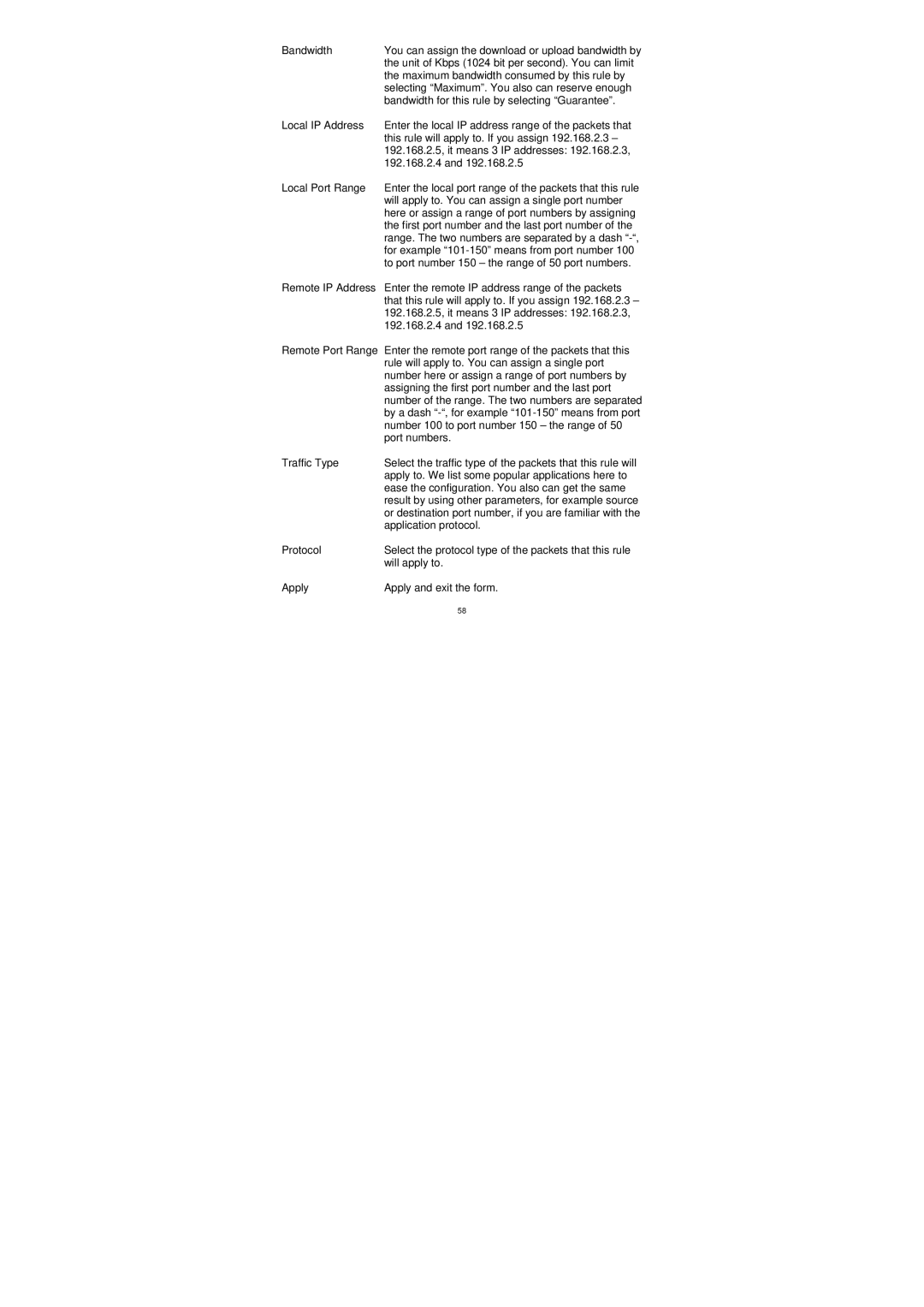Bandwidth | You can assign the download or upload bandwidth by |
| the unit of Kbps (1024 bit per second). You can limit |
| the maximum bandwidth consumed by this rule by |
| selecting “Maximum”. You also can reserve enough |
| bandwidth for this rule by selecting “Guarantee”. |
Local IP Address | Enter the local IP address range of the packets that |
| this rule will apply to. If you assign 192.168.2.3 – |
| 192.168.2.5, it means 3 IP addresses: 192.168.2.3, |
| 192.168.2.4 and 192.168.2.5 |
Local Port Range | Enter the local port range of the packets that this rule |
| will apply to. You can assign a single port number |
| here or assign a range of port numbers by assigning |
| the first port number and the last port number of the |
| range. The two numbers are separated by a dash |
| for example |
| to port number 150 – the range of 50 port numbers. |
Remote IP Address | Enter the remote IP address range of the packets |
| that this rule will apply to. If you assign 192.168.2.3 – |
| 192.168.2.5, it means 3 IP addresses: 192.168.2.3, |
| 192.168.2.4 and 192.168.2.5 |
Remote Port Range | Enter the remote port range of the packets that this |
| rule will apply to. You can assign a single port |
| number here or assign a range of port numbers by |
| assigning the first port number and the last port |
| number of the range. The two numbers are separated |
| by a dash |
| number 100 to port number 150 – the range of 50 |
| port numbers. |
Traffic Type | Select the traffic type of the packets that this rule will |
| apply to. We list some popular applications here to |
| ease the configuration. You also can get the same |
| result by using other parameters, for example source |
| or destination port number, if you are familiar with the |
| application protocol. |
Protocol | Select the protocol type of the packets that this rule |
| will apply to. |
Apply | Apply and exit the form. |
| 58 |
Page 59
Image 59
